Gynecomastia
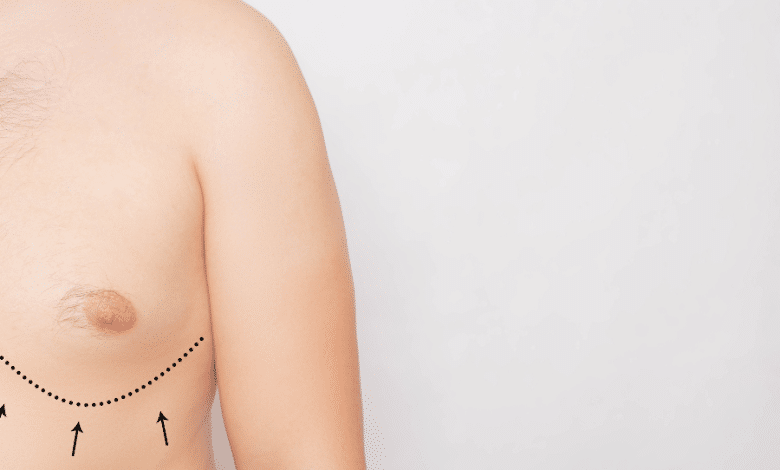
Gynecomastia is an exaggerated growth or swelling of breast tissue in men. This condition is usually caused by hormone changes or medication use. Although gynecomastia is usually a physiological condition, it can sometimes be a symptom of a serious illness.
Gynecomastia can be commonly seen due to hormonal changes, especially during adolescence. It usually goes away on its own when puberty ends. However, in some cases, gynecomastia may progress and become permanent.
Gynecomastia can also be seen as a side effect of some drugs. For example, some antidepressants, anxiety medications, blood pressure medications, and steroids can cause gynecomastia. Also, some health problems can cause gynecomastia, for example; such as low testosterone levels, thyroid problems and liver disease.
Gynecomastia is a condition that usually does not require treatment and can go away on its own. However, if gynecomastia occurs due to an underlying health problem or medication side effect, it may need to be treated. Treatment options may include medication, hormone therapy, or surgery. In the case of gynecomastia, it is important to choose the right treatment option in consultation with a doctor.
İçindekiler
What is gynecomastia?
Gynecomastia is an exaggerated growth of breast tissue in men. This condition can occur due to overgrowth or fat accumulation in the mammary glands. Gynecomastia does not usually cause any health problems, but it can sometimes be a source of psychological discomfort for men. Gynecomastia can be caused by a number of different causes, such as hormonal changes, drug use, genetic factors, or obesity. Treatment may vary depending on the underlying cause and in some cases it does not require treatment, while in other cases surgical intervention may be required.
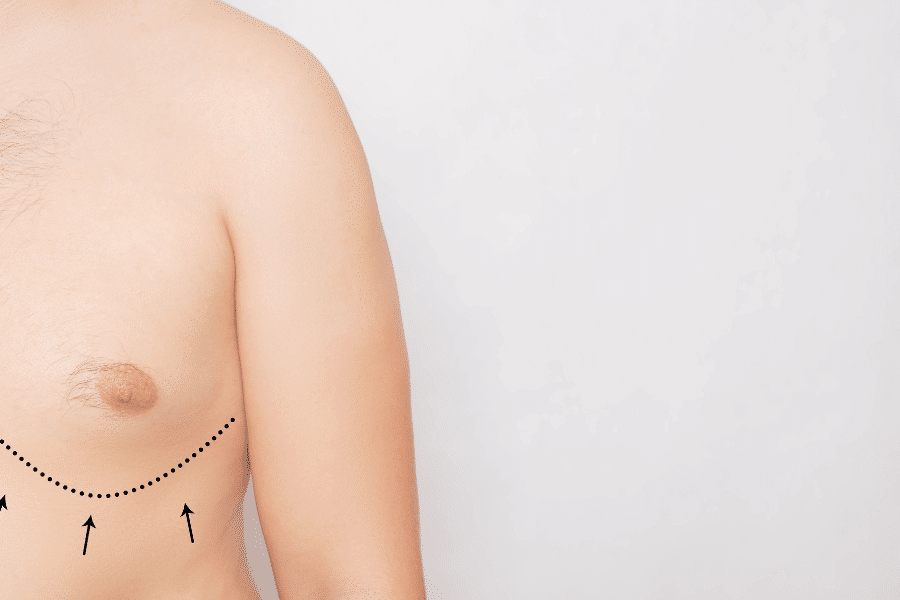
What Are the Symptoms of Gynecomastia?
Gynecomastia is a condition characterized by abnormal growth of breast tissue in men. Symptoms of this condition can include:
Swelling or appearance of lumps in the breasts: In men, gynecomastia results in an abnormal enlargement of the breasts and often presents as a lump or lump in one or both breasts.
Tenderness or pain: Men with gynecomastia may experience tenderness or pain in their breasts.
Numbness or tingling in the breasts: In some men, gynecomastia can cause numbness or tingling in the breasts.
Redness or scaling of the skin on the breasts: Some men with gynecomastia may experience skin redness or scaling on the breasts.
Size and shape changes: In men with gynecomastia, the size and shape of the breasts may change, resulting in a more feminine appearance than usual.
These symptoms are suggestive of gynecomastia, but it is necessary to consult a doctor for a full diagnosis.

Who Gets Gynecomastia?
Gynecomastia is a common condition that can be seen in about 40% of men. It can be seen in men of any age, but adolescence and old age are more common times for gynecomastia to develop.
In adolescent boys, hormonal changes can cause gynecomastia. In men entering puberty, estrogen hormone levels increase temporarily, which can lead to the development of gynecomastia. Usually, this condition resolves on its own within a few months.
In older men, gynecomastia can occur due to decreased testosterone levels and increased estrogen levels. In addition, other health problems such as obesity, drug use, thyroid disease, liver disease, kidney failure, tumors or genetic factors can also cause gynecomastia.
In summary, gynecomastia can be seen in men of all ages and may occur due to various reasons. Men with gynecomastia symptoms should be examined by a doctor to determine the underlying cause and recommend appropriate treatment.
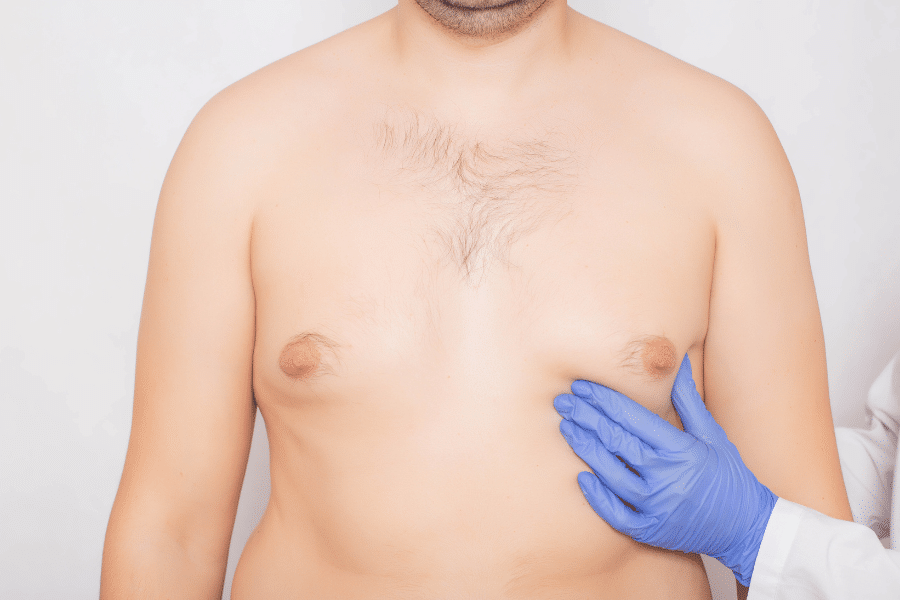
What are the Causes of Gynecomastia?
There are many factors that cause gynecomastia. Some of these are:
Hormonal changes: Gynecomastia can occur as a result of hormonal changes. The hormone estrogen is normally found at lower levels in men, but in some cases estrogen levels are elevated, which can cause breast tissue to enlarge.
Drug use: Some drugs can cause gynecomastia. For example, antidepressants, anxiolytics, steroids, androgens, HIV drugs, and some drugs used to treat heart disease can cause gynecomastia.
Alcohol use: Alcohol can cause gynecomastia by lowering testosterone levels.
Obesity: Increased adipose tissue in the body can raise estrogen levels and cause gynecomastia.
Thyroid diseases: Over or under functioning of the thyroid gland can cause hormonal imbalance and lead to gynecomastia.
Liver diseases: Liver diseases can cause gynecomastia by increasing estrogen levels.
Genetic factors: Gynecomastia is more common in some families and genetic factors are thought to play a role.
Testosterone deficiency: Low testosterone levels can cause estrogen levels to rise, leading to gynecomastia.
There are many other reasons among the factors that cause gynecomastia. When gynecomastia is diagnosed, it is important to determine the underlying cause of gynecomastia and to give appropriate treatment.
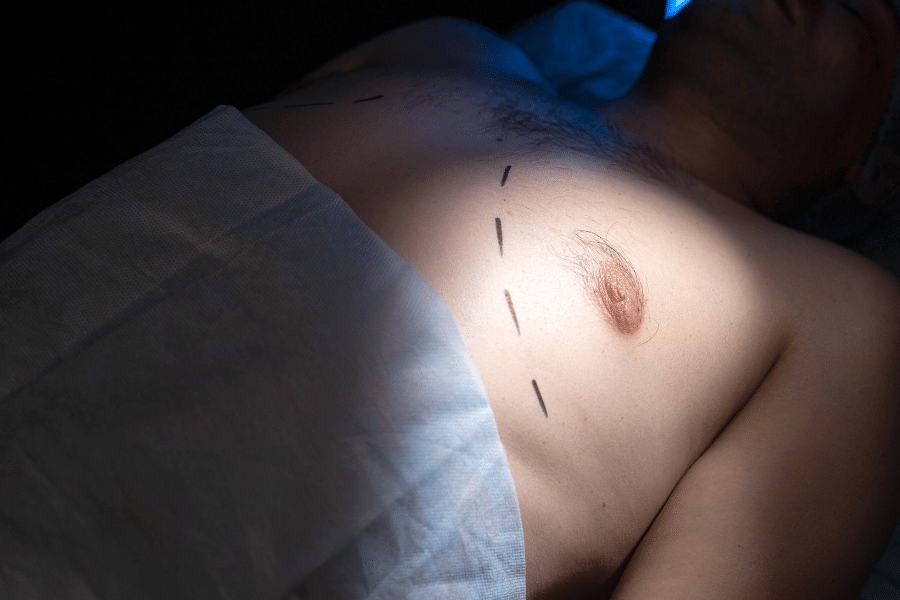
When Should I See a Doctor for Gynecomastia?
Although gynecomastia is usually a harmless condition, it can be a symptom of a serious underlying health problem. Therefore, it is important to consult a doctor when gynecomastia symptoms are noticed. Gynecomastia symptoms include breast enlargement, tenderness or pain, nipple discharge, or changes in breast shape.
Also, if any of the gynecomastia symptoms occur suddenly or if the symptoms are very severe, it may be necessary to consult a doctor immediately.
Gynecomastia is usually diagnosed by physical examination and hormone tests. Once the underlying cause has been determined, appropriate treatment can be recommended. In some cases, gynecomastia resolves on its own, while treatment may be required in some cases.
In summary, it is important to see a doctor if gynecomastia symptoms are noticed or come on suddenly. This is necessary to determine the underlying cause and to give appropriate treatment.

Gynecomastia Diagnosis
The diagnosis of gynecomastia is usually made with a physical examination, medical history taking, and hormone tests.
Physical examination: The doctor can evaluate the size and firmness of the breast tissue. He or she may also check for tenderness or pain in the nipple and tissues around the breast.
Medical history: The doctor may ask when gynecomastia symptoms started, how often they occur, and how severe they are. They may also learn about the patient’s family history, medication use, alcohol consumption, obesity, or another medical condition.
Hormone tests: Hormone tests are one of the most important tests used to diagnose gynecomastia. Testosterone and estrogen hormone levels can be measured. If estrogen levels are high or testosterone levels are low, there may be a hormone imbalance causing gynecomastia. In addition, thyroid hormones and other hormone levels may be tested.
In some cases, a biopsy may be needed to take a sample of breast tissue. This can be done to determine if there is another condition causing gynecomastia.
Diagnosing gynecomastia helps determine the underlying cause and give appropriate treatment. Therefore, it is important to consult a doctor when gynecomastia symptoms are noticed.
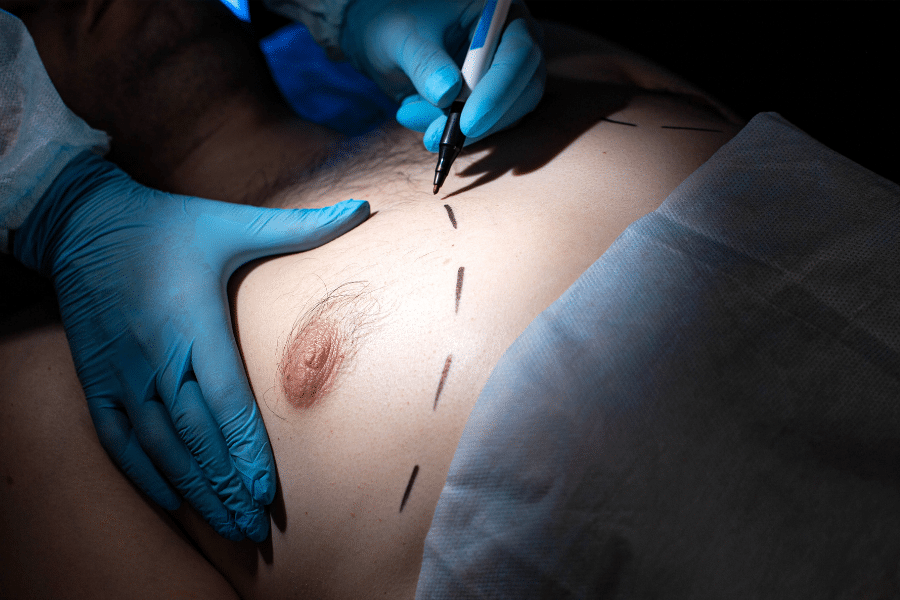
Gynecomastia and Fat Accumulation
Gynecomastia is a condition characterized by enlargement or swelling of breast tissue. It usually occurs due to hormonal reasons and is associated with an increase in the hormone estrogen, which causes the growth of cells in the breast tissue.
Fat accumulation is a condition that occurs when fat cells accumulate in different parts of the body. Fat accumulation usually occurs due to weight gain, irregular diet, sedentary lifestyle and genetic factors.
Gynecomastia and fat accumulation are different conditions and issues that need to be addressed separately. However, in some cases, there may be fat accumulation that accompanies gynecomastia. Especially in men, fat accumulation in the chest area can create an appearance similar to gynecomastia, and this situation is called “pseudogynecomastia”.
There are different treatments available for gynecomastia and fat accumulation. Treatment for gynecomastia depends on identifying the underlying cause and may vary depending on factors such as hormone imbalance, medication side effect, or medical condition. In some cases, gynecomastia surgery may be required.
Treatment for fat accumulation can usually be done with diet and exercise changes, lifestyle changes, and surgical interventions such as liposuction. However, in the case of pseudogynecomastia, the swelling in the chest area caused by fat accumulation can also be removed by surgical interventions.
In summary, although gynecomastia and fat accumulation are different problems, in some cases they can be together. Treatment options differ depending on the underlying causes, and it is important that you and your doctor determine the most appropriate treatment option.
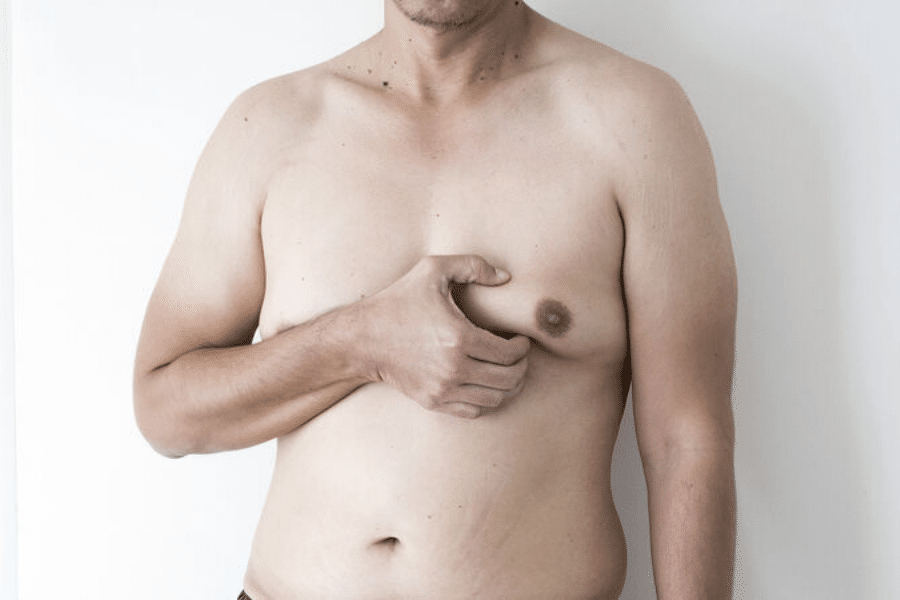
Recommendations to Prevent Gynecomastia Formation
It may not be possible to completely prevent the formation of gynecomastia, but you can reduce the risk factors by taking some precautions. The recommendations are:
Maintain a healthy lifestyle: Exercise regularly, eat a balanced diet, and don’t smoke.
Limit alcohol and drug use: Alcohol and drug use, especially long-term use, can increase the risk of gynecomastia.
Limit medication use: Some medications, especially hormones such as androgens and anabolic steroids, can increase the risk of gynecomastia. It may be helpful to limit your medication or talk to your doctor about alternative treatment options.
Manage stress: Stress can affect hormone levels in the body and increase the risk of gynecomastia. You can use yoga, meditation, or other relaxation techniques to reduce stress.
Talk to your doctor: Some medical conditions and hormone imbalances can increase the risk of gynecomastia. Monitor your health and detect potential risks early by making regular check-ups with your doctor.
In summary, maintaining a healthy lifestyle, limiting alcohol and drug use, limiting drug use, managing stress and having regular doctor checkups are the measures you can take to reduce the risk of gynecomastia.

How is Gynecomastia Treated?
Gynecomastia treatment may vary depending on the cause of gynecomastia. In some cases, gynecomastia may resolve on its own and no treatment is required. However, if gynecomastia symptoms persist or if there are underlying medical conditions or medication use, treatment may be needed. Gynecomastia treatment methods may include:
Medication: Some medications can reduce or stop breast tissue growth caused by gynecomastia. Medicines such as antiestrogen drugs to reduce estrogen levels or estrogen-blockers to stop breast tissue growth can be used.
Surgical intervention: One of the most commonly used methods in the treatment of gynecomastia is surgical intervention. In surgical intervention, breast tissue can be removed or fat accumulation can be reduced. Surgery is often used in conjunction with drug therapy.
Hormone therapy: If gynecomastia is caused by hormone imbalances, hormone therapy can be used. Hormone therapy can increase or decrease the levels of certain hormones, such as testosterone or other hormones.
Lifestyle changes: In some cases, gynecomastia symptoms can be alleviated with lifestyle changes. In particular, limiting alcohol and drug use, losing weight, and following a healthy diet and exercise program can alleviate gynecomastia symptoms.
Gynecomastia treatment may vary depending on the cause of gynecomastia. The effectiveness of treatment will depend on the cause and severity of the gynecomastia. The treatment plan will be determined by your doctor.

What is Gynecomastia Surgery?
Gynecomastia surgery is a surgical procedure used in the treatment of gynecomastia by surgical removal of breast tissue or reduction of adipose tissue. Gynecomastia surgery is usually performed when gynecomastia does not respond to other treatment options or the underlying medical conditions that cause gynecomastia cannot be treated.
Gynecomastia surgery is usually performed under local anesthesia and the patient can return home the same day. During surgery, breast tissue or adipose tissue is removed or reduced. In the postoperative period, the patient may experience a slight feeling of pain and swelling for several days. The recovery period after surgery may vary depending on the general health status of the patient, the scope and nature of the surgery.
Gynecomastia surgery is generally considered a safe procedure. However, as with any surgery, gynecomastia surgery can carry potential risks. These may include infection, bleeding, anesthesia-related complications, and wound healing problems. Before having gynecomastia surgery, your doctor will give you detailed information about the advantages, disadvantages and risks of the surgery.
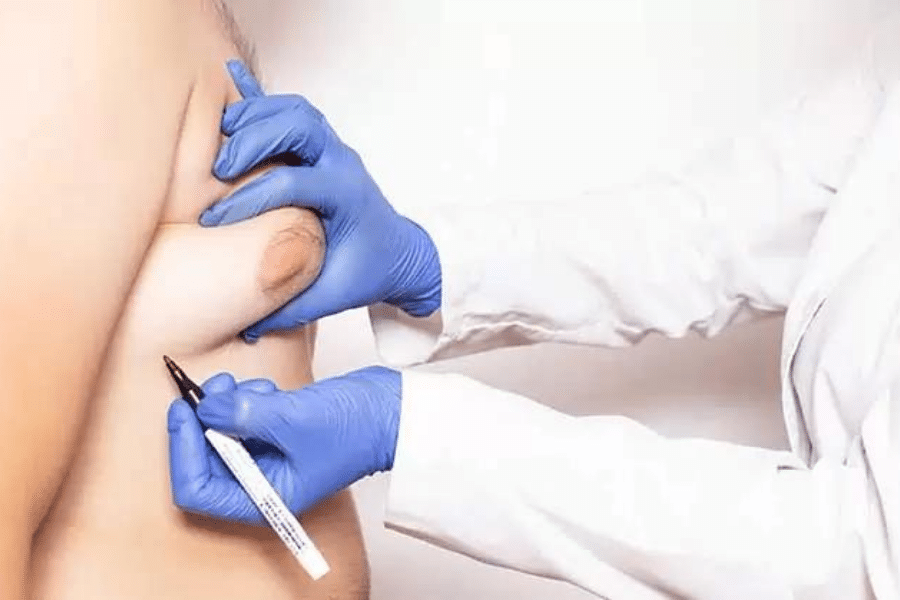
Gynecomastia Surgery Prices 2023
Gynecomastia surgery prices depend on many factors and can vary from country to country, even from city to city. However, it can be said that gynecomastia surgery in 2023 is usually between 5,000-10,000 USD on average.
Prices may vary depending on the location of the hospital or clinic where the surgery will be performed, the scope of the surgery, the patient’s health status, the type of anesthesia and the techniques used. In some cases, insurance companies may cover gynecomastia surgery, but coverage conditions and limits differ.
It is important that you pay attention to the experience and reputation of the doctor and hospital you will choose when researching the price for gynecomastia surgery. It is also recommended that you speak openly with your doctor about the cost of the surgery and inquire about potential additional fees and costs.




